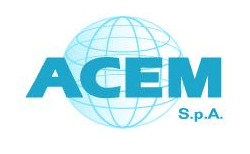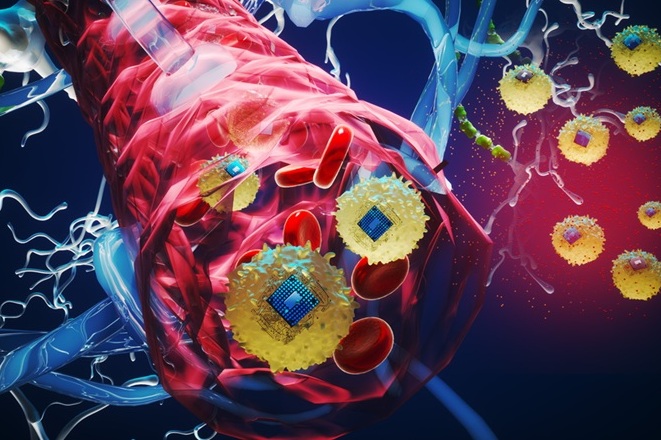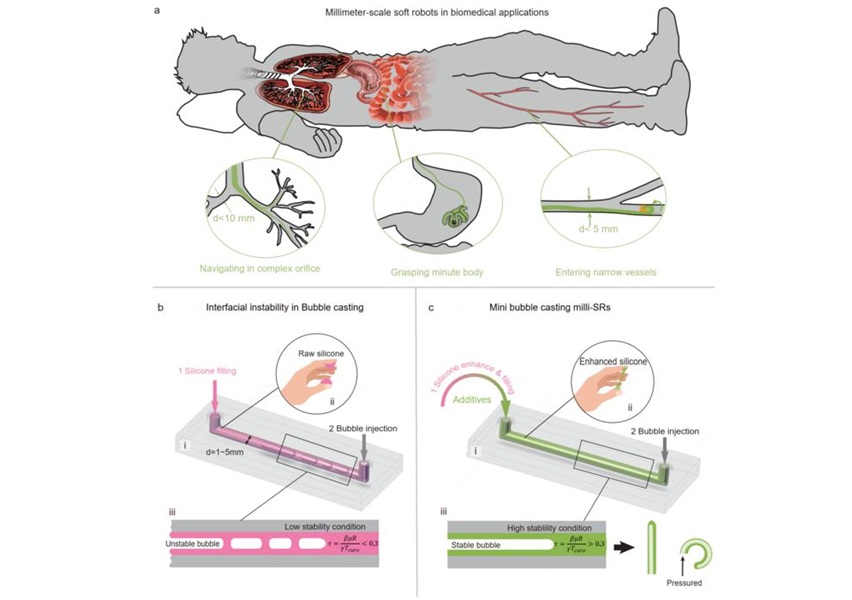Heart Association Issues Statement on Understanding Radiation Risks Before Cardiac Imaging
|
By HospiMedica International staff writers Posted on 16 Oct 2014 |

Image: The American Heart Association issued a statement that patients need to be informed on radiation risks before undergoing cardiac imaging (Photo courtesy of AHA - The American Heart Association).
People should understand why a heart-imaging test is needed before undergoing the procedure, including the benefits and risks involved, such as the potential long-term risk from radiation exposure, advises a new scientific statement.
The statement was published online, before print, on September 29, 2014, in the American Heart Association’s (AHA; Dallas, TX, USA) journal Circulation. “When medical imaging is being considered, patients should feel very comfortable asking how the test will help them and the possible risks, including radiation-related risks,” said Reza Fazel, MD, MSc, chair of the writing committee for the statement and an AHA volunteer currently serving on the Joint Cardiac Imaging Committee of the AHA’s Council on Clinical Cardiology and Council on Cardiovascular Radiology.
As technology has evolved, imaging modalities have become an increasingly important application in diagnosing and treating patients with heart disease. However, the rising use has resulted in higher radiation exposure during the last 20 years. Heart imaging now accounts for nearly 40% of the radiation exposure patients receive from medical tests, according to the statement.
“In general, the radiation-related risk of any imaging test to an individual patient is very small and, when the test is clinically appropriate, the benefits of the test typically far outweigh any potential risks,” said Dr. Fazel, a cardiologist at Beth Israel Deaconess Medical Center (Boston, MA, USA).
Some questions that may help a patient understand the risks and benefits are: (1) how will this test help diagnose or treat my heart problem? (2) Will the results of this test change the recommended treatment? (3) Are there other techniques to get the information without using radiation? (4) How much radiation exposure may occur? (5) How could that affect my chance of developing cancer later in life? (6) Lastly, how does that risk compare to the risk from other common activities?
The most typically used heart and blood vessel imaging procedures using radiation are nuclear stress tests, cardiac computed tomography (CT) scans and fluoroscopy (a real-time X-ray technology used to guide catheter and device placement during heart catheterization and tests for heart rhythm abnormalities). Echocardiography and cardiac magnetic resonance imaging do not expose patients to ionizing radiation.
The new statement also provides guidance for the training of professionals who order or administer cardiac imaging tests. Clinicians planning imaging tests should understand when each type of test is appropriate, the typical average radiation dose and the potential risks. In deciding the best imaging method to use, the clinician should also consider the test’s diagnostic accuracy, potential risks, cost, availability, and the patient’s convenience.
“Radiation-related risk is one of the factors that should be considered in the decision to use cardiovascular imaging with ionizing radiation, particularly in younger patients in whom the potential risk of radiation exposure is thought to be higher,” Dr. Fazel said.
Clinicians who perform cardiac imaging should understand current methods required to select the optimal dose of radiation—using enough to produce high-quality imaged, not significantly more than that. They should also know how to minimize radiation exposure to staff, according to the statement.
Related Links:
American Heart Association
Beth Israel Deaconess Medical Center
The statement was published online, before print, on September 29, 2014, in the American Heart Association’s (AHA; Dallas, TX, USA) journal Circulation. “When medical imaging is being considered, patients should feel very comfortable asking how the test will help them and the possible risks, including radiation-related risks,” said Reza Fazel, MD, MSc, chair of the writing committee for the statement and an AHA volunteer currently serving on the Joint Cardiac Imaging Committee of the AHA’s Council on Clinical Cardiology and Council on Cardiovascular Radiology.
As technology has evolved, imaging modalities have become an increasingly important application in diagnosing and treating patients with heart disease. However, the rising use has resulted in higher radiation exposure during the last 20 years. Heart imaging now accounts for nearly 40% of the radiation exposure patients receive from medical tests, according to the statement.
“In general, the radiation-related risk of any imaging test to an individual patient is very small and, when the test is clinically appropriate, the benefits of the test typically far outweigh any potential risks,” said Dr. Fazel, a cardiologist at Beth Israel Deaconess Medical Center (Boston, MA, USA).
Some questions that may help a patient understand the risks and benefits are: (1) how will this test help diagnose or treat my heart problem? (2) Will the results of this test change the recommended treatment? (3) Are there other techniques to get the information without using radiation? (4) How much radiation exposure may occur? (5) How could that affect my chance of developing cancer later in life? (6) Lastly, how does that risk compare to the risk from other common activities?
The most typically used heart and blood vessel imaging procedures using radiation are nuclear stress tests, cardiac computed tomography (CT) scans and fluoroscopy (a real-time X-ray technology used to guide catheter and device placement during heart catheterization and tests for heart rhythm abnormalities). Echocardiography and cardiac magnetic resonance imaging do not expose patients to ionizing radiation.
The new statement also provides guidance for the training of professionals who order or administer cardiac imaging tests. Clinicians planning imaging tests should understand when each type of test is appropriate, the typical average radiation dose and the potential risks. In deciding the best imaging method to use, the clinician should also consider the test’s diagnostic accuracy, potential risks, cost, availability, and the patient’s convenience.
“Radiation-related risk is one of the factors that should be considered in the decision to use cardiovascular imaging with ionizing radiation, particularly in younger patients in whom the potential risk of radiation exposure is thought to be higher,” Dr. Fazel said.
Clinicians who perform cardiac imaging should understand current methods required to select the optimal dose of radiation—using enough to produce high-quality imaged, not significantly more than that. They should also know how to minimize radiation exposure to staff, according to the statement.
Related Links:
American Heart Association
Beth Israel Deaconess Medical Center
Latest Critical Care News
- Coronary Artery Stenosis Could Protect Patients from Pulmonary Embolism Effects
- Sweat-Powered Sticker Turns Drinking Cup into Health Sensor
- Skin-Mounted 3D Microfluidic Device Analyzes Sweat for Real-Time Health Assessment
- New Therapeutic Brain Implants to Eliminate Need for Surgery
- Stem Cell Patch Gently Heals Damaged Hearts Without Open-Heart Surgery
- Biomaterial Vaccines to Make Implanted Orthopedic Devices Safer
- Deep Learning Model Predicts Sepsis Patients Likely to Benefit from Steroid Treatment
- Programmable Drug-Delivery Patch Promotes Healing and Regrowth After Heart Attack
- Breakthrough Ultrasound Technology Measures Blood Viscosity in Real Time
- Magnetically Activated Microscopic Robotic Swarms Could Deliver Medicine Inside Body
- Frequent ECG Use Can Identify Young People at Risk of Cardiac Arrest
- Ultrasound Controlled Artificial Muscles Pave Way for Soft Robots
- AI-Powered Alerts Reduce Kidney Complications After Heart Surgery
- Algorithm Predicts and Lengthens Pacemaker Battery Life
- Novel Pill Could Mimic Health Benefits of Bariatric Surgery
- AI Models Identify Patient Groups at Risk of Being Mistreated in Hospital ED
Channels
Critical Care
view channel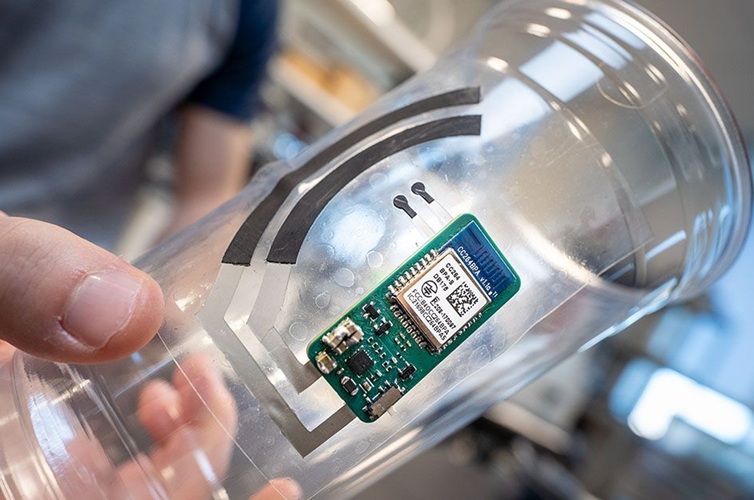
Sweat-Powered Sticker Turns Drinking Cup into Health Sensor
Micronutrient deficiencies affect millions worldwide, yet checking vitamin C levels still requires blood draws, lab equipment, and high costs that prevent regular monitoring. Most people only get annual... Read more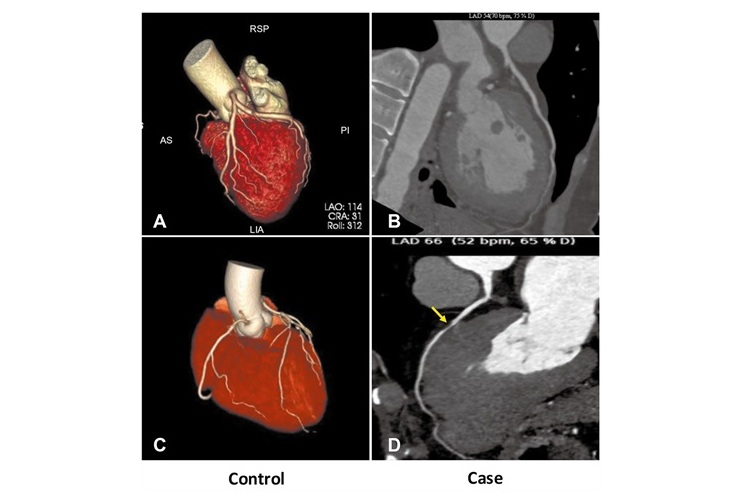
Coronary Artery Stenosis Could Protect Patients from Pulmonary Embolism Effects
Acute pulmonary embolism (PE) occurs when blood clots block vessels carrying deoxygenated blood from the heart to the lungs, triggering a sudden rise in pressure against the right ventricle and risking... Read moreSurgical Techniques
view channel
Drug-Coated Balloons Can Replace Stents Even in Larger Coronary Arteries
Narrowed or blocked arteries pose a major global health burden, often leading to heart attacks, heart failure, or stroke when blood flow becomes compromised. Traditional balloon angioplasty can reopen... Read more
Magnetic Kidney Stone Retrieval Device Outperforms Ureteroscopic Laser Lithotripsy
Kidney stone disease affects millions worldwide and often requires ureteroscopic laser lithotripsy, yet fragment removal remains inefficient. Many patients are left with residual pieces that can cause... Read more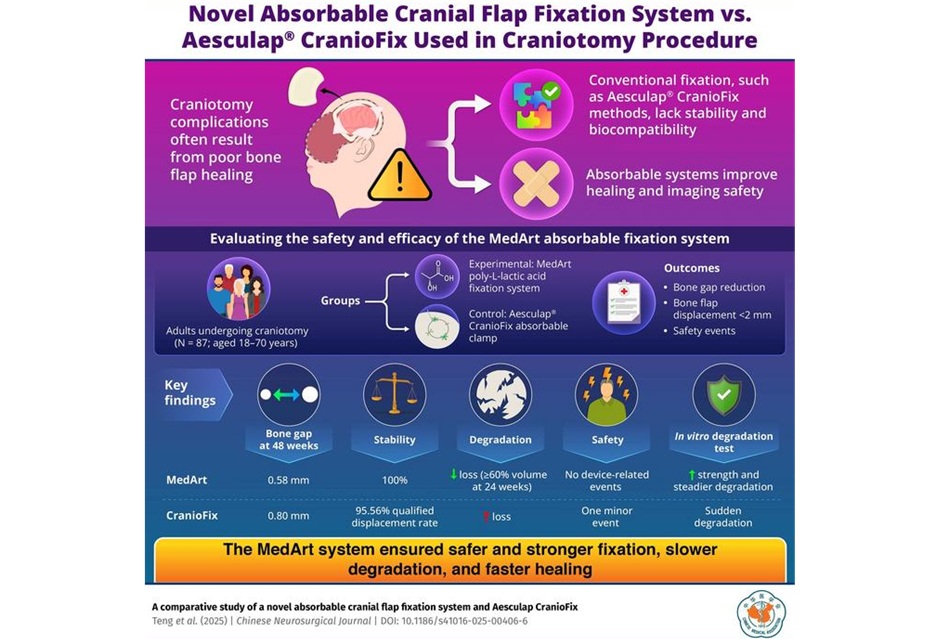
Absorbable Skull Device Could Replace Traditional Metal Implants Used After Brain Surgery
Closing the skull safely after neurosurgery remains a major clinical challenge, as traditional metal or semi-absorbable fixation devices can interfere with imaging, degrade unpredictably, or persist long... Read morePatient Care
view channel
Revolutionary Automatic IV-Line Flushing Device to Enhance Infusion Care
More than 80% of in-hospital patients receive intravenous (IV) therapy. Every dose of IV medicine delivered in a small volume (<250 mL) infusion bag should be followed by subsequent flushing to ensure... Read more
VR Training Tool Combats Contamination of Portable Medical Equipment
Healthcare-associated infections (HAIs) impact one in every 31 patients, cause nearly 100,000 deaths each year, and cost USD 28.4 billion in direct medical expenses. Notably, up to 75% of these infections... Read more
Portable Biosensor Platform to Reduce Hospital-Acquired Infections
Approximately 4 million patients in the European Union acquire healthcare-associated infections (HAIs) or nosocomial infections each year, with around 37,000 deaths directly resulting from these infections,... Read moreFirst-Of-Its-Kind Portable Germicidal Light Technology Disinfects High-Touch Clinical Surfaces in Seconds
Reducing healthcare-acquired infections (HAIs) remains a pressing issue within global healthcare systems. In the United States alone, 1.7 million patients contract HAIs annually, leading to approximately... Read moreHealth IT
view channel
Printable Molecule-Selective Nanoparticles Enable Mass Production of Wearable Biosensors
The future of medicine is likely to focus on the personalization of healthcare—understanding exactly what an individual requires and delivering the appropriate combination of nutrients, metabolites, and... Read moreBusiness
view channel
Philips and Masimo Partner to Advance Patient Monitoring Measurement Technologies
Royal Philips (Amsterdam, Netherlands) and Masimo (Irvine, California, USA) have renewed their multi-year strategic collaboration, combining Philips’ expertise in patient monitoring with Masimo’s noninvasive... Read more
B. Braun Acquires Digital Microsurgery Company True Digital Surgery
The high-end microsurgery market in neurosurgery, spine, and ENT is undergoing a significant transformation. Traditional analog microscopes are giving way to digital exoscopes, which provide improved visualization,... Read more
CMEF 2025 to Promote Holistic and High-Quality Development of Medical and Health Industry
The 92nd China International Medical Equipment Fair (CMEF 2025) Autumn Exhibition is scheduled to be held from September 26 to 29 at the China Import and Export Fair Complex (Canton Fair Complex) in Guangzhou.... Read more








